In the Berkshires, a New Generation Is Putting Down Roots
- Oops!Something went wrong.Please try again later.
When Edith Wharton moved to the Berkshire Mountains at the turn of the last century, she framed her departure from city life as a personal liberation. In her autobiography, amid ecstatic descriptions of the gorgeous scenery she found in western Massachusetts, she wrote that she had “at last escaped from watering-place trivialities to the real country.” Wharton was 40 years old when she left the society circles of Manhattan and the “flat frivolity” of Newport, Rhode Island, where she had a summer home, for 100-plus acres of rolling farmland just outside the village of Lenox. It was her attempt to forge a second act, a more enriching and affirming writer's life. Still, she wasn't exactly roughing it in the country. She designed and erected a stately 35-room white stucco mansion she called The Mount, which included terrazzo floors, marble fireplaces, a stable, and a spree of manicured flower gardens. The Berkshires offered Wharton her fantasy of a pastoral paradise, along with enough creature comforts and high culture to delight snooty friends like Henry James when they dropped in for a visit. She described her Berkshires bolt-hole as “my first real home.”
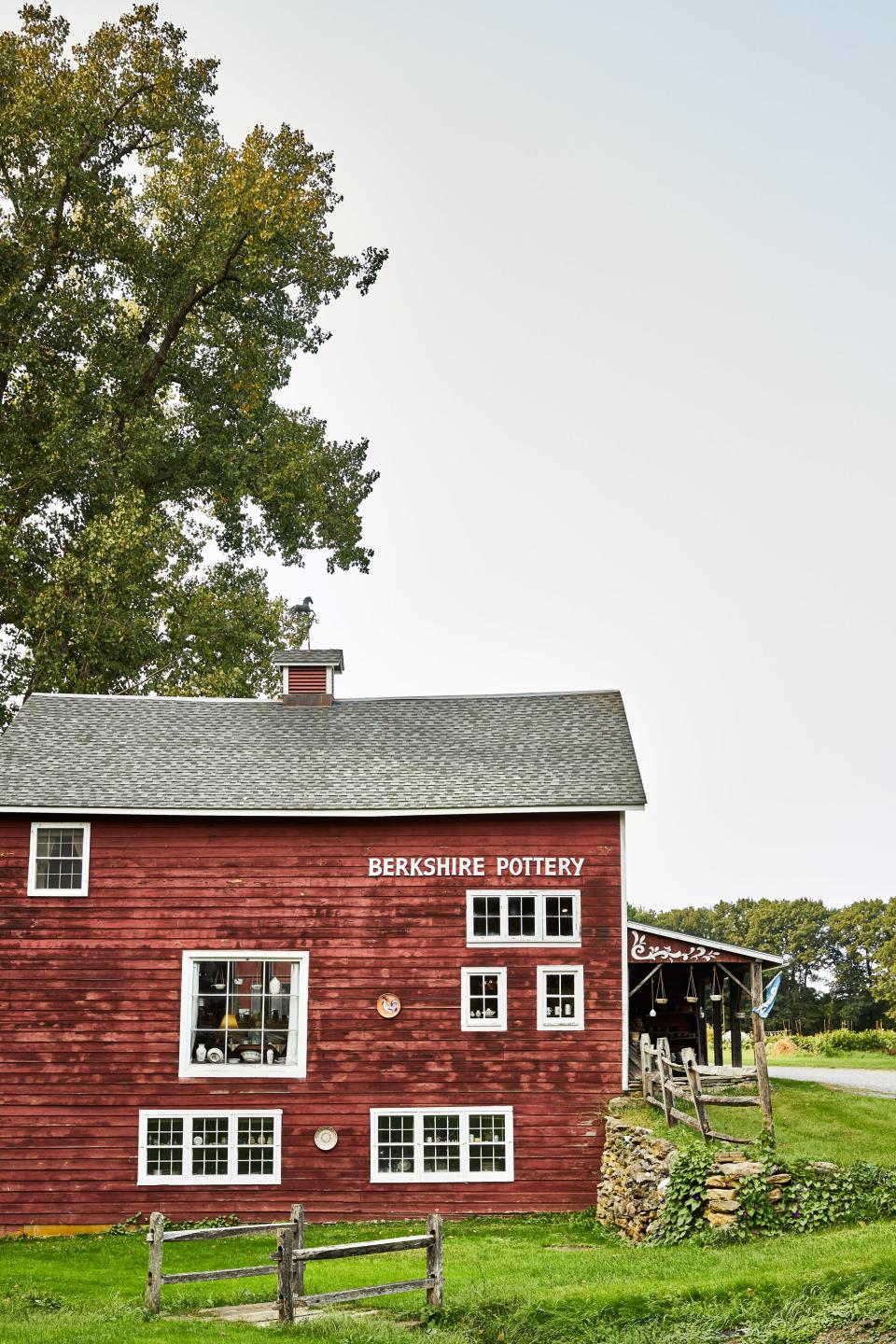
The Berkshires village of Hillsdale

Tess Diamond at her farm store in Great Barrington
Wharton's experience mirrors—on a sliding scale of means and self-mythology—the story of so many who have decided midswim to make a life change and call the Berkshires their home. Including me. In 2015, living full-time in Manhattan, I found myself financially flush with a book advance for my second novel. One weekend I drove up to the southern Berkshires to visit a friend with a weekend house. I was instantly floored by the beauty of the area—the dramatic mountain landscape, complete with a horizon of purple-tinted peaks. I, too, had grown tired of the flat frivolity of my youth, at least full-time. I was 39, which meant I had beaten Wharton by one year, although she certainly trounced me in ostentation. I put down some money on a tiny 1923 hunting cabin on 17 wooded acres, with a gigantic flagstone fireplace. It had no winter insulation. I didn't care. I was following a path that had been carved out by other more illustrious artists and writers going back centuries.
You could say that Herman Melville pioneered the trend. He fled to the Berkshires from New York 50 years before Wharton, driven by similar escapist fantasies. It is said that the massive hump of Mount Greylock, the region's highest peak, reminded him of a whale breaching the ocean's surface. This rich cross history of bohemia and money, of artists and cultural titans, makes the Berkshires more than a mere country getaway. It is where the Gilded Age rich came to build their mansions—winkingly called “cottages”—in the late 1800s, bringing their designers, decorators, artist friends, gardeners, and chefs. And it is where dynamic art organizations like Tanglewood for music, Jacob's Pillow for dance, and Shakespeare & Company for the stage have reigned supreme for generations. In my time here I've seen more concerts at Tanglewood in Lenox and more Degas paintings at the Clark Institute in Williamstown than I have black bears.
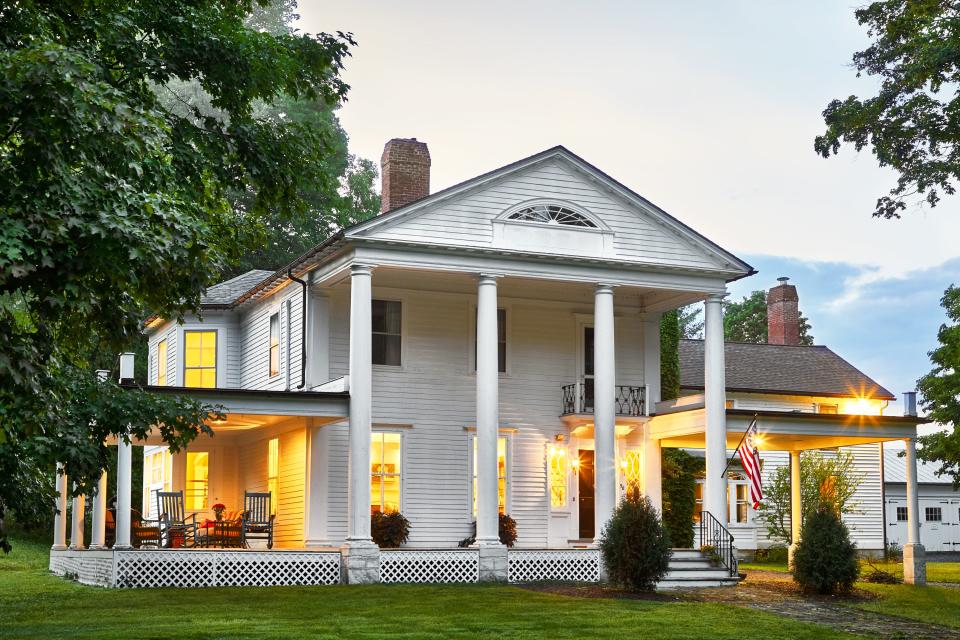
Granville House, Berkshires
You won't be in the area long before someone mentions that the Berkshires is roughly 120 miles from both New York and Boston. This fact is meant to remind you that the region doesn't exist in the thrall of a single megacity. Though the mountain range spills into New York and Connecticut, Berkshire County is first and foremost a part of the commonwealth of Massachusetts, spanning the state's entire western edge, from the industrial town of North Adams to the rolling farmlands in the south. With no mass transit link, it takes actual work over knotted country roads to reach it.
Even so, in the five years I've been a part-time Berkshires resident I've noticed a startling jump in the number of New Yorkers willing to make the drive up to our mountains. Maybe they've heard it's the new It weekend spot, or they're coming for the dispensaries that have multiplied since the state legalized pot in 2016. For years there has been chatter in the local papers about bringing public transportation back to the area, the latest being a rumored railroad linking to towns like Pittsfield; until then, aside from hiking the Appalachian Trail, the car is the only answer.
Some friends brag that they can drive to New York in two hours (usually in the middle of the night on a weekday), but more often it takes closer to three. Psychologically, that separation keeps the Berkshires an animal of New England rather than a far-flung bedroom community of the Big Apple. And it is this New Englandness, in all of its romantic, Norman Rockwellian charm, with its picturesque village towns like Stockbridge, that enchants the first-time visitor. Scattered through the hills and valleys are hundreds of swimming lakes, hiking trails, ski spots, apple orchards, antiques shops, and farm stands, and each season brings a different atmosphere and new adventures.
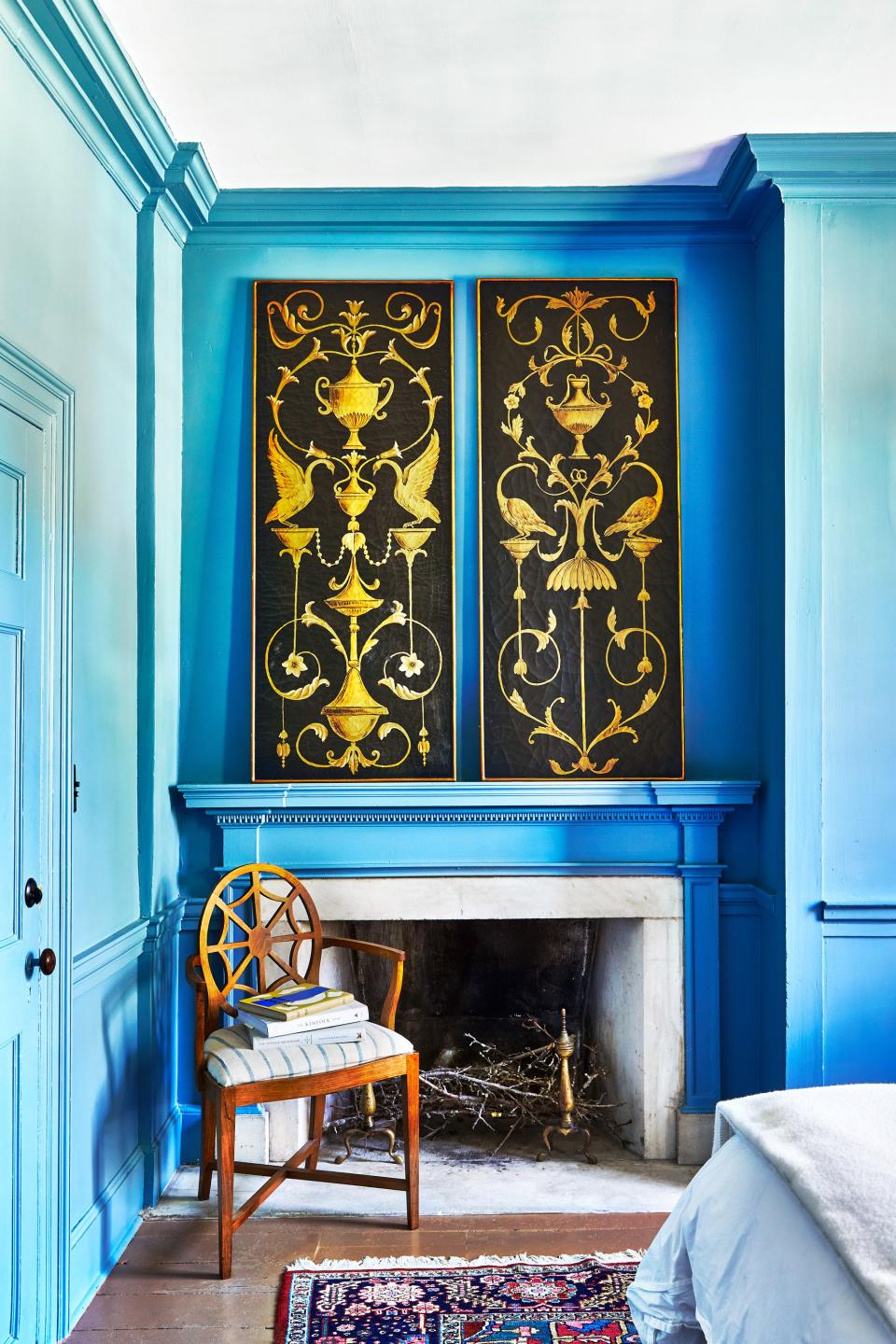
The Inn at Kenmore Hall, Berkshires
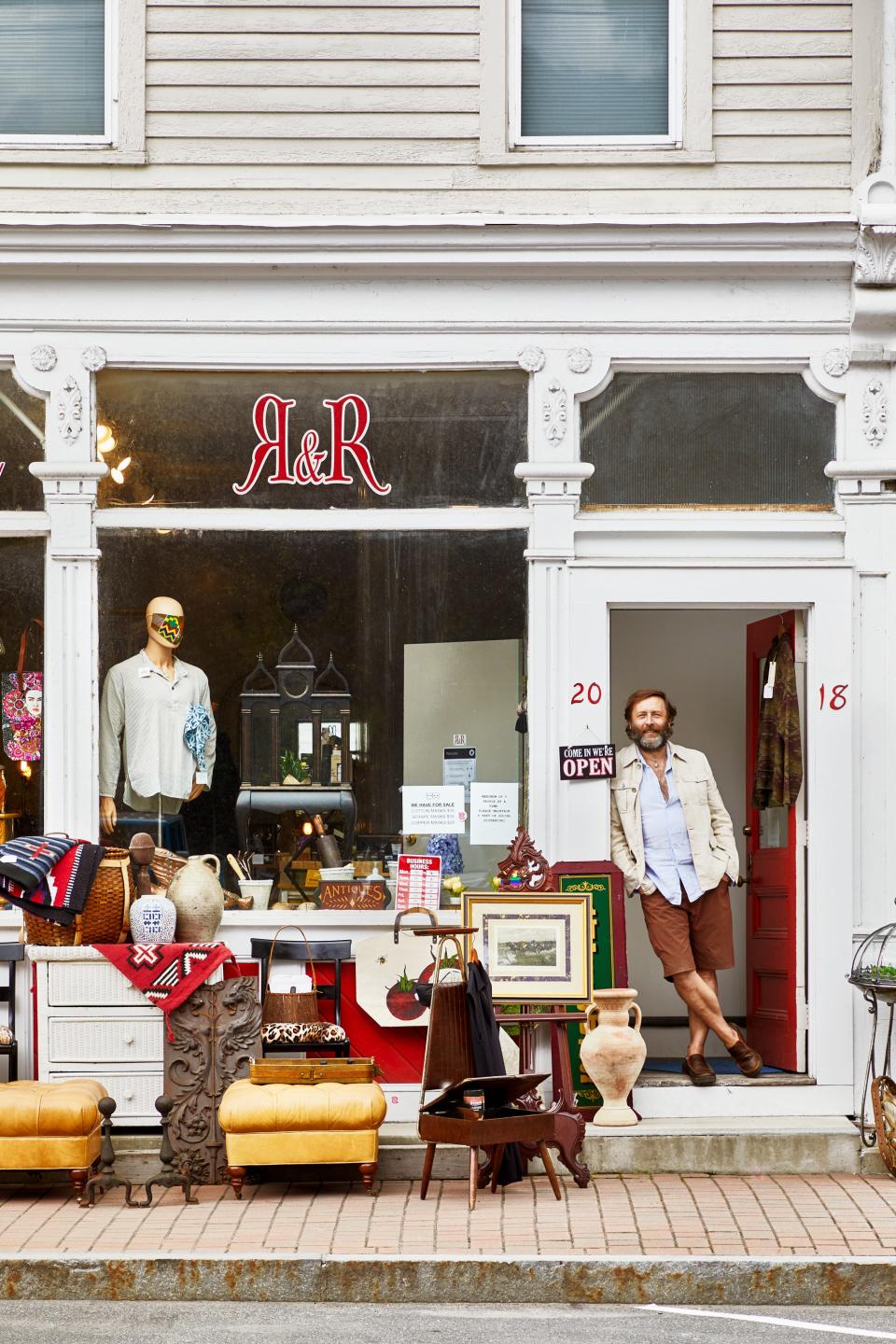
R&R West Stockbridge, Berkshires
One warm blue-sky morning, I visit Mark Firth on his 82-acre farm on the boundary of the villages of Sandisfield and Monterey. I've known Firth since 1999, when he opened his restaurant, Diner, in Williamsburg, Brooklyn. This not-so-greasy spoon in a refurbished dining car became the hippest and most beloved restaurant in the borough, and soon copies proliferated all over New York City. It is safe to say that Firth, who was born in the U.K., grew up in Zambia, and has lived all over the world, is a master at creating a restaurant scene.
The lifestyle here has been revised, cultivated, and perfected throughout history
We walk the grassy meadows of his property, stopping to sit on a tree trunk. He scratches the ears of his sheep. It's hard to think of a more extreme change of scenery from the rumbling, potholed streets of South Williamsburg. Firth moved up here with his family in 2010, commuting intermittently to New York for work. “I found that I was unexcited on the drive down to the city,” Firth remarks, “and so excited for the projects up here on the drive back.” Those included rearing pigs, growing fruits and vegetables, fixing up his wooden farmhouse, and rigging a water-storage system for his crops and animals. Eventually, Firth freed himself of Diner and became a full-time Berkshirite. He then turned his expertise to a new venture that would become the region's closest approximation of a see-and-be-seen hangout.
Opened in 2012 on Main Street in Great Barrington, the Prairie Whale is a casual American restaurant that utilizes the agricultural bounty of the region. On summer nights, folks driving past could be forgiven for thinking it was some kind of concert venue, with young revelers spilling onto the front lawn, playing Ping-Pong and cornhole or drinking at picnic tables. Originally, Firth's own farm supplied much of the meat (the establishment's name derives from a 19th-century expression for pigs). Like Diner two decades earlier, the Prairie Whale has become one of my go-to recommendations for friends wanting to taste the best of the area. “I moved up here because I was burned out on working in very busy restaurants and wanted peace,” Firth says before offering me fresh farm eggs from his chicken roost. “Now I'm busier than ever.”
There has never been a dearth of farm-to-table options in this area of such rich soil. But the Prairie Whale's success owes in part to a youthful, cheeky menu that feels fresh for these parts, which can seem stuck in time. Other upstart restaurants, like the creative, seasonal Nudel, in Lenox, and the global-inflected Cantina 229, in New Marlborough, have landed equally well. “We did not succeed in our idea of opening a small business,” says Cantina 229 owner Josh Irwin. “We had no idea this restaurant would turn into such a monster.”
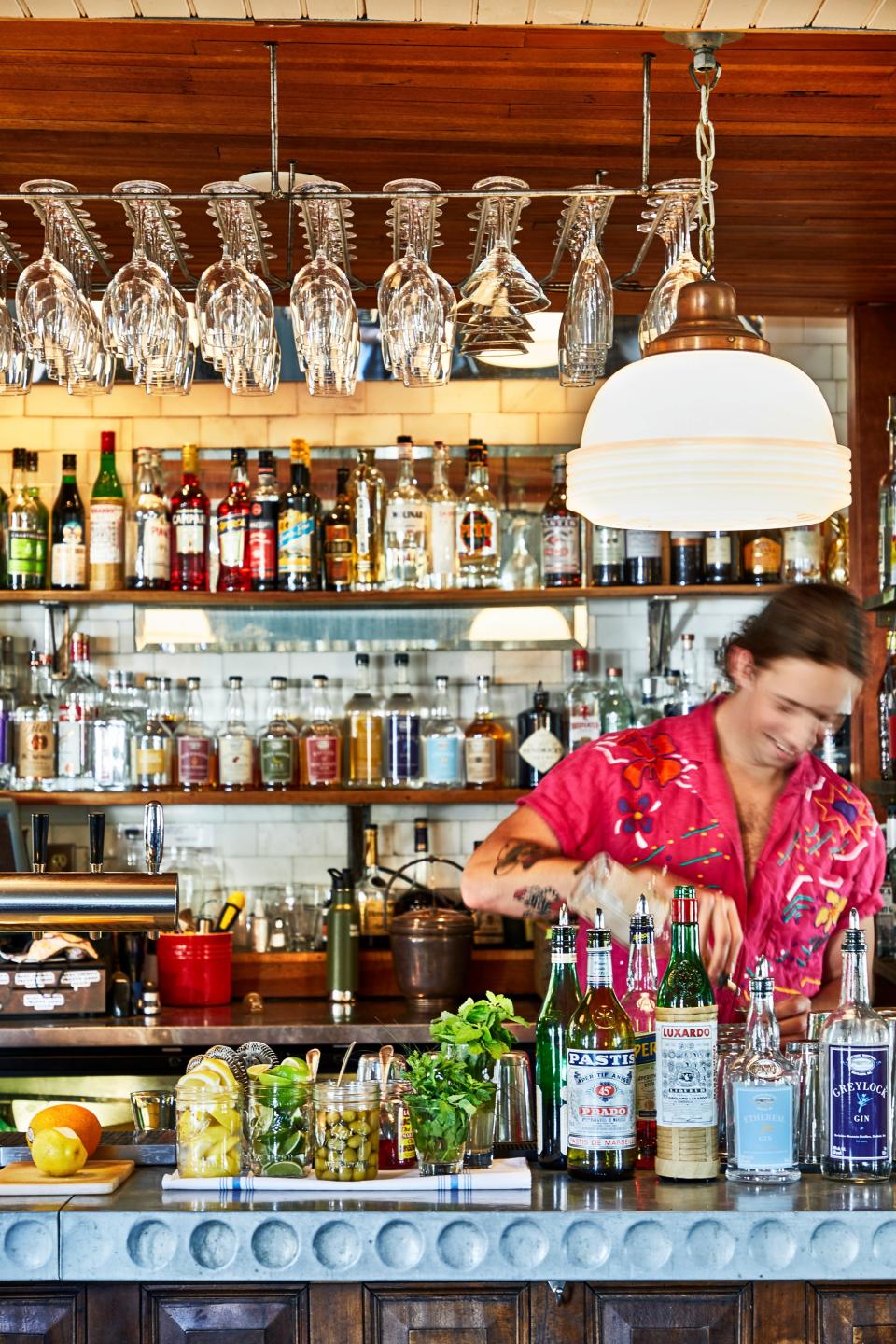
The Prairie Whale, Great Barrington, Berkshires

Granville House, Berkshires
Perhaps the desire to preserve the beauty of the Berkshires while playing with all of its customs and traditions stems from the fact that it has been a dream location for so many who manage to put down roots here. I pull into the driveway of Terry and Terri Coughlin's recently opened bed-and-breakfast, the delightfully unfussy Granville House, located in the town of Housatonic just outside of Great Barrington. I park next to a car with “Just Married” scrawled on the back window. Sure enough, inside, the newlyweds, high on love and a day of antiquing, are showing the Coughlins the treasures they'd purchased.
The Coughlins, New Yorkers who met while working at Manhattan's Gramercy Tavern in the late 1990s, also honeymooned in the Berkshires. One night they stopped in at the Old Inn on the Green in New Marlborough for a candlelit dinner and found themselves falling in love with the majesty of the place. On the 20th anniversary of their first date, they returned to the Berkshires, booking a room at the Inn at Kenmore Hall, which had just been opened by J.Crew's former head of menswear Frank Muytjens and artist and former restaurateur Scott Edward Cole. Seeing the owners living out their countryside fantasy, the Coughlins decided to quit their New York lives and open their own spot. They located a Greek Revival home built in 1825 and went to work preserving the original details while adding their own flourishes like a record player in every room.
This is the mindset of the new crop of hoteliers in the Berkshires. No one is erecting contemporary compounds that feel beamed in from a chilly architecture studio. Rather, they are revamping local signature archetypes—the country inn, the highway motel, the grand estate. That ethos is especially evident in several Gilded Age mansions that have been transformed into luxury spa retreats. The latest is from Miraval, which built a modern wellness center beside the sprawling Wyndhurst Manor & Club in Lenox, known for its popular 18-hole golf course dating to the 1920s. With activities like horseback riding, kayaking, and nature walks, it can feel like summer camp for adults. It joins nearby Canyon Ranch Lenox, whose integrative spa spaces and saunas inside a Bellafontaine mansion have drawn guests for a generation. In a different way, the minimalistic Tourists hotel in North Adams, which opened in 2018, also preserves the area's vernacular. It took the template and former site of a 1960s motor lodge and rejiggered it into a postmodern getaway. The hotel's proximity to institutions such as the Clark Art Institute and MASS MoCA—itself an act of forward-looking historic preservation, inhabiting a compound of 19th-century factory buildings—has helped establish it as a utopia for art lovers who come to check out the Degas and Renoirs at the former and the James Turrells and Jenny Holzers at the latter.

James Turrell installation, Mass MoCA, Berkshires
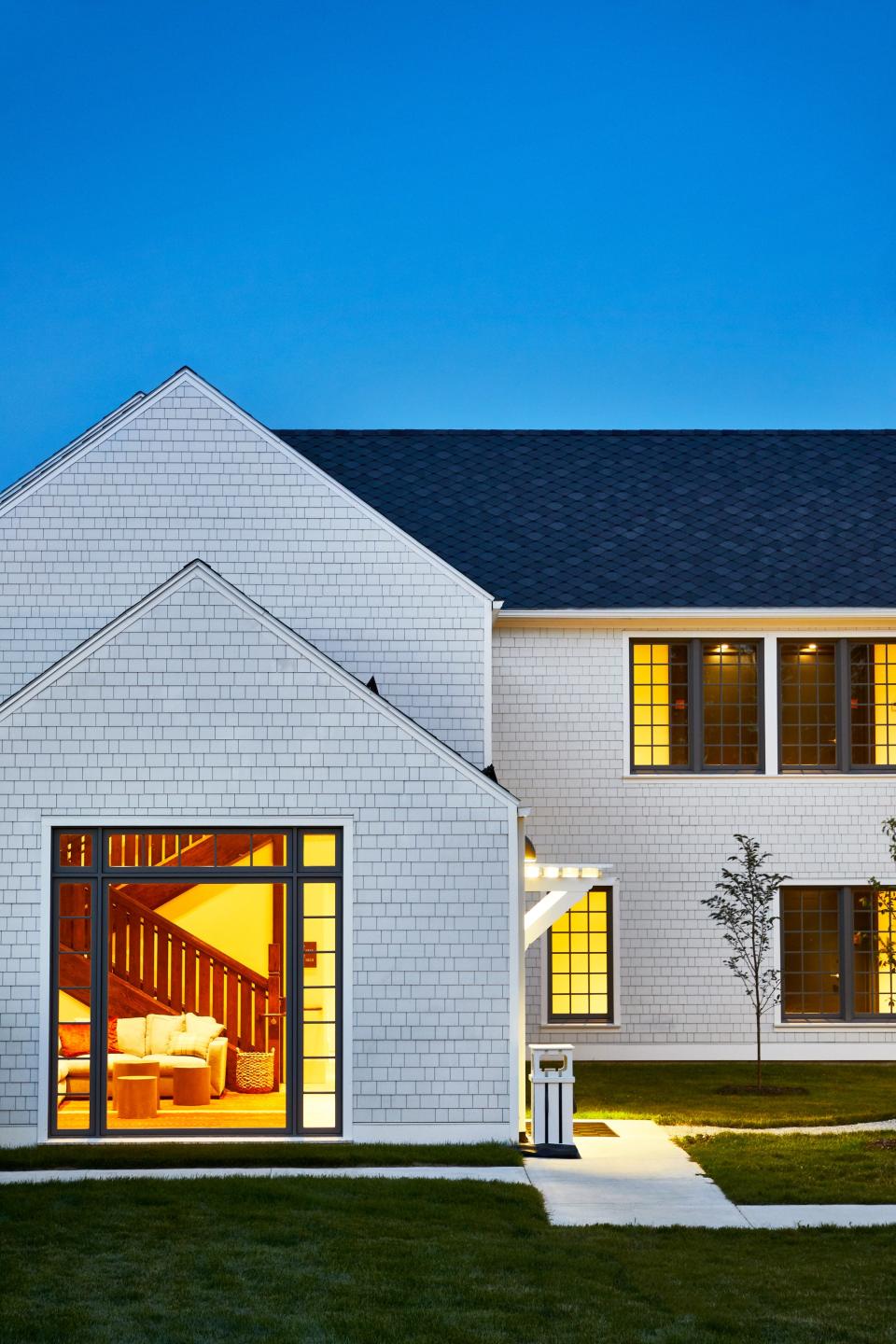
Miraval Berkshires
For me, what makes the Berkshires a lifelong prospect, a place where I wanted to flourish even after the initial relief at having fled the city had subsided, is how much its lifestyle has been built and revised, seeded and cultivated and expanded, perfected and reperfected in substantive and meaningful ways throughout its history. At the Clark Art Institute, I ride a golf cart around the bucolic grounds with Victoria Saltzman, the museum's director of communications. “We think we are the only art museum that lets cows pasture on its campus and has a pond for ice skating,” she tells me.
Soon we amble through the galleries of the museum's collection. I can't stop gasping at the trove of Impressionist masterpieces. Saltzman explains that the collectors Sterling and Francine Clark had originally intended to open a museum on a parcel of land behind the Frick Museum in New York City in the 1950s. But at the height of the Cold War, the Clarks feared a bomb might ravage the city and believed that here in the mountains their collection would be safe. It doesn't seem a stretch to think that such safety—of the writer, of the creative self, of whatever elusive fire needs stoking in order for an artist to grow—was exactly what Edith Wharton sought by moving here. I often visit her historic house on summer weekend afternoons when there is live jazz on the terrace and stroll through the gardens with a glass of wine. The place just gives and gives.
One Sunday morning in autumn, I meet up with Brian Cruey, a director for the Southern Berkshires at the Trustees of Reservations, a private Massachusetts nonprofit that is the oldest land conservancy in the country. It is responsible for preserving some of the most valuable, scenic lands in the Berkshires, including the trails of Monument Mountain and Gilded Age estate of Naumkeag. Cruey and I hike through the site of Ashintully Gardens in the village of Tyringham. His work is, in my mind, among the most important for safeguarding the essential character of the Berkshires. “I think of the Trustees as protecting future generations of everything,” Cruey says, “people, animals, the flora—everything.” We climb a hill and reach a large concrete slab that was once the foundation of a Gilded Age palace. A fire destroyed the mansion in 1952, leaving little more than four Doric columns that stand sentinel on the hillside today. In the bright morning light, the columns take on the look of ancient ruins. And if you stand behind them, they frame the green-bearded mountain, which is just on the verge of turning color into something wild and new.
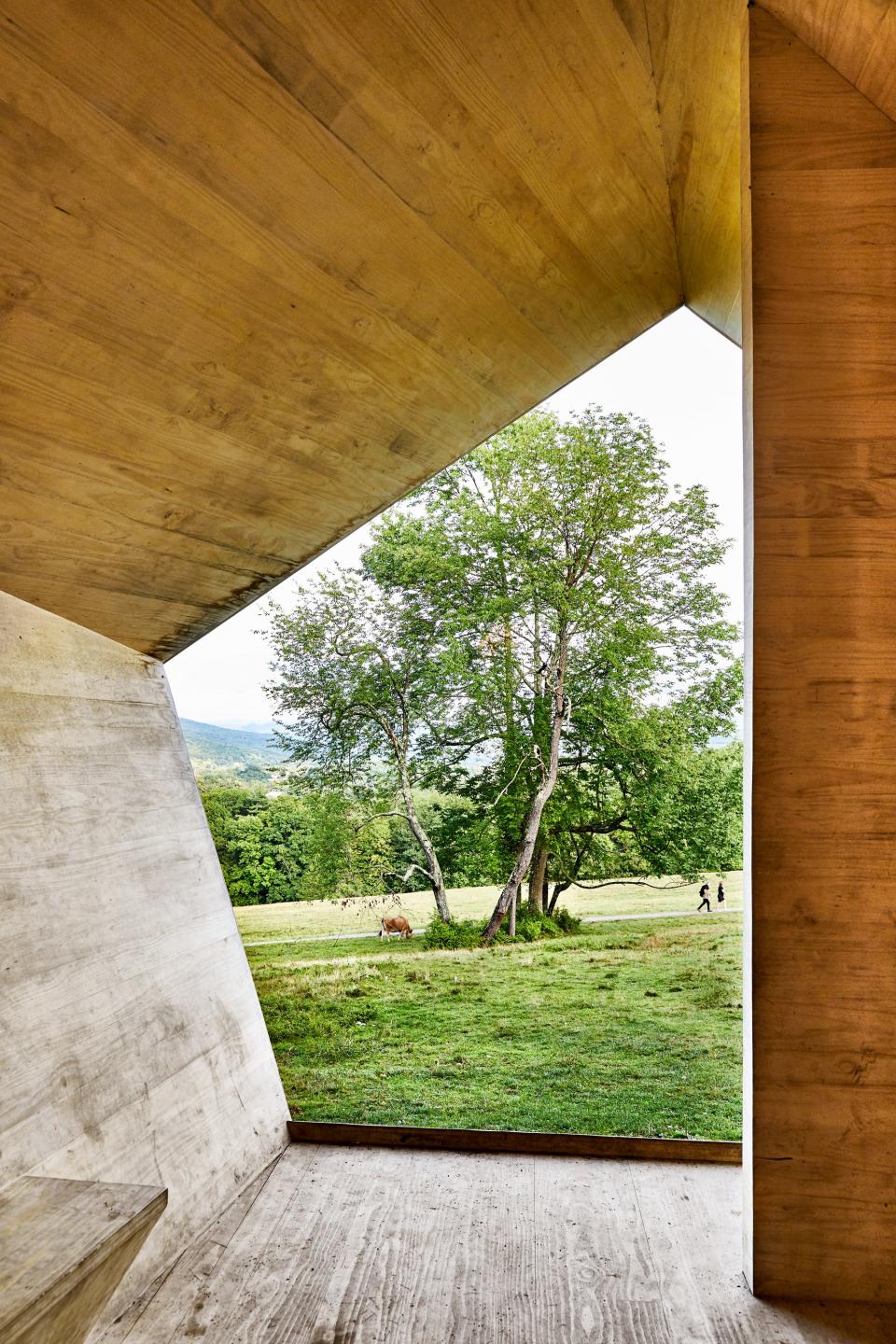
The Clark Art Institute, Berkshires
Planning a trip to the Berkshires
Stay
Canyon Ranch Lenox This all-inclusive retreat turned the Berkshires into a wellness destination in 1989. Doubles from $847 per person
Granville House Cozy low-key rooms come with Brooklinen bedding; a covered porch wraps around the house for late-afternoon dozing. Doubles from $200
The Inn at Kenmore Hall Historic flourishes, like a mahogany staircase, have been preserved in this 18th-century clapboard house. Doubles from $395
Miraval Berkshires The spa is one of the largest in New England, with everything from Ayurveda to energy work. Doubles from $599 per person
Tourists A group of art lovers led by Wilco bassist John Stirratt opened this hotel near MASS MoCA and the Clark Art Institute in 2018 as a tribute to motor lodges. Doubles from $239
Go
The Clark Art Institute Known for its Impressionist collection, the Clark is hosting an open-air exhibit of modern sculpture though September.
MASS MoCA The largest contemporary art museum in the country has sound installations and works from masters like Louise Bourgeois.
The Mount The Italianate gardens at Wharton's estate deserve an afternoon of your time.
Eat
Cantina 229 The rotating menu could feature a curry one day, bibimbap another. Dinner for two from $70
Nudel Berkshire native Bjørn Somlo serves rib-sticking dishes like pork ragout and shrimp gumbo. Dinner for two from $40
The Prairie Whale Crowds come year-round for upmarket takes on American classics. Dinner for two from $92 — Betsy Blumenthal
This article appeared in the May/June 2021 issue of Condé Nast Traveler. Subscribe to the magazine here.
Originally Appeared on Condé Nast Traveler

